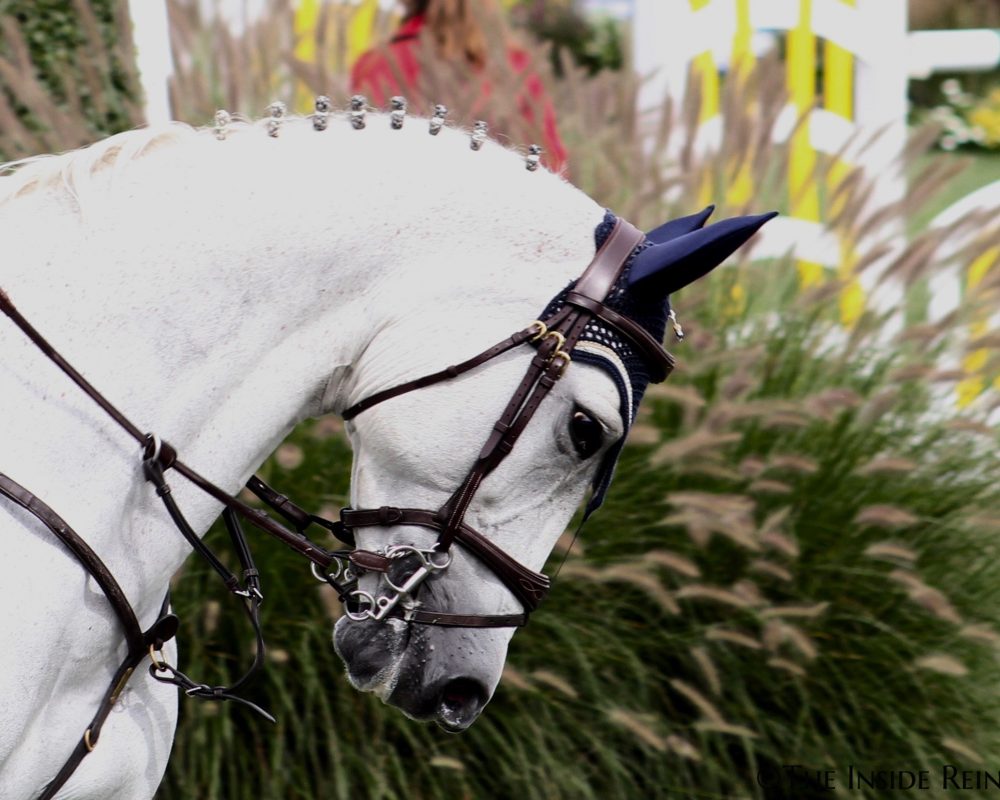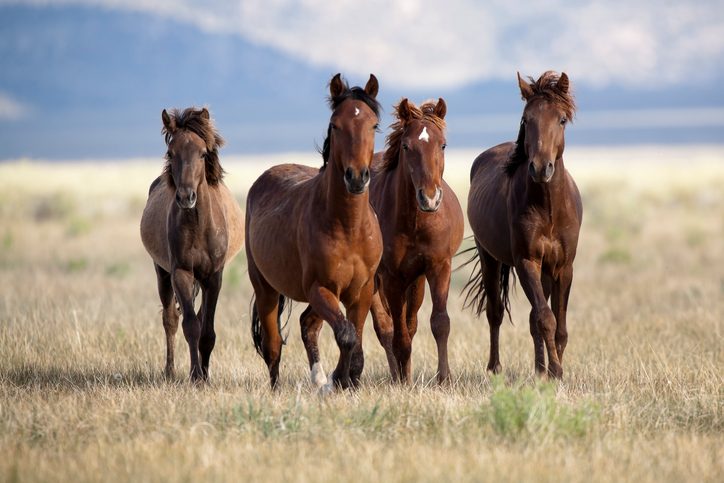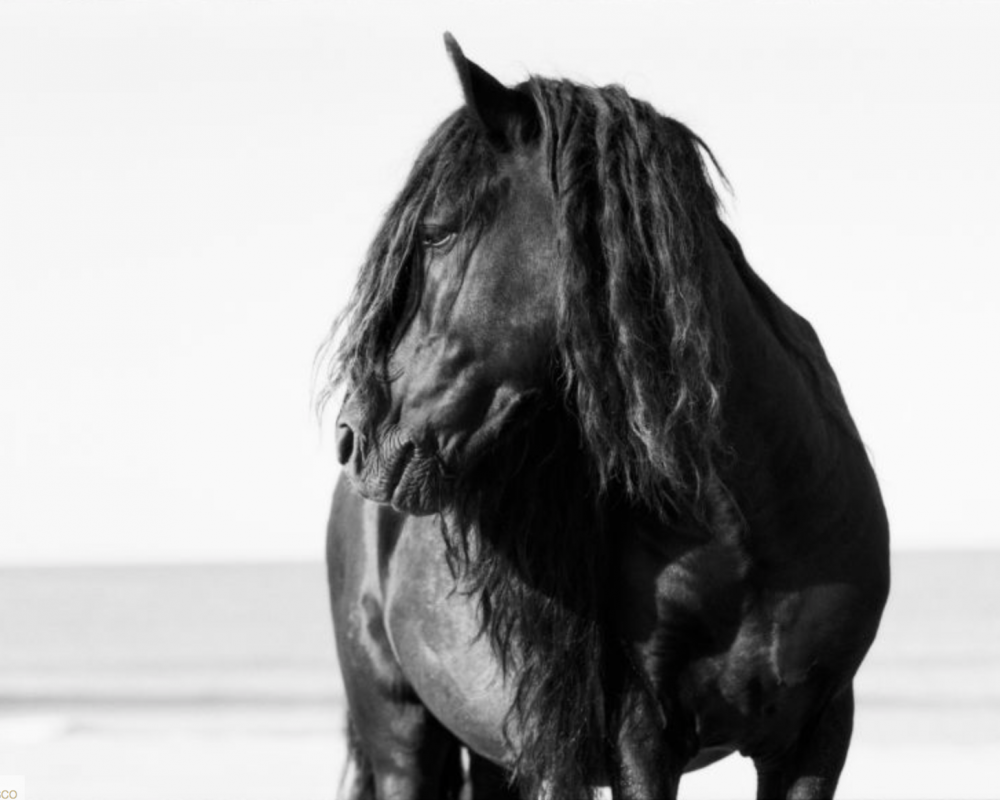Mitchell Bornstein’s debut novel, Last Chance Mustang, tells the story of Samson, a wild mustang-turned-captive. More than just the story of one man and one horse, Last Chance Mustang is a compelling exploration of the history and plight of the American mustang.
Samson was one of innumerable wild mustangs rounded up by the Bureau of Land Management since the 1970’s. He was adopted through the BLM’s wild horse adoption program and bounced around like an orphan between foster homes, misunderstood and abused.
A lawyer by trade, Bornstein had made a name for himself in the local horse community for his work with untrained and unruly horses. Bornstein was charged with getting the Samson under control: or else.
As Bornstein recounts his trials and tribulations with Samson, the reader often wonders how the trainer survived to write the novel, their showdowns reaching Ali vs. Frazier levels of contention. The encounters highlight the spirit of an animal wild by nature, distrustful of man who’d tried so hard, so violently, to break him, and a trainer whose intuitive and gentle nature sought to understand him – for the sake of the mustang’s life.
“It was very hard trying to walk the line while writing this book. I was always afraid people would be turned off and dislike Samson. He has his good and his bad. We all do. The best part is I think people related to that. None of us are perfect, he’s not perfect,” says Bornstein.
Bornstein had worked with mustangs prior to Samson, though none presented the challenge of this particular fire breather. “Mustangs are totally different and I think that’s where people get in trouble [when they adopt them]. The wild horses are just hardwired differently.”
To better understand Samson, Bornstein takes the reader on a journey of his ancestry. The author presents a history of the horse – from the “dawn horse” standing just 14 inches tall, to the Arabs, Barbs, and horses of the Spanish conquistadors that would eventually bring us the mustang.
The story of the American mustang is rife with struggle. Both revered and vilified, this quintessential symbol of American freedom is under constant attack. When the Free Roaming Wild Horse and Burro Act of 1971 passed, mustang advocates breathed a sigh of relief. But their story in the time since is far from happy.
Since Nixon signed the Act in ’71, it’s estimated the mustang population has decreased by 40%. The dramatic decrease in population is largely due to BLM roundups conducted under the guise of over-grazing and overpopulation. With 60,000 mustangs currently sitting in BLM holding pens, the question has to be asked whether this is appropriate “management.”
Bornstein doesn’t necessarily buy what the BLM is selling when it comes to over-grazing.
“When you look at the studies out there, the actual science doesn’t say anything about horses degrading the land. Horses move, cattle don’t move. Horses chew, move, and drink. Cattle stay put and pull up the roots.”
For Bornstein, it’s not herd size, but rather fences that are the problem.
“The BLM breaks down herd management areas not because the land is ruined, but because there is money to be made for different uses for the land. So you have a 200 head heard and 100,000 acres, then it gets fenced down to 50,000 acres, and then you fence it down some more to 20,000 acres. Then they say we don’t have enough forage on those acres, we don’t have enough water. Well, yeah, they were on 100,000 acres before and it worked perfectly for them. Now you have a resource problem.”
The argument that mustangs are rapidly reproducing, resulting in overpopulation, also struggles to hold up under scrutiny, according to Bornstein. “The BLM says mustangs are reproducing at a rate of 20-26 percent. Science says 10, at most 12 percent.”
Mustang herds are a definitive example of “survival of the fittest.” Through natural herd behaviors, only the strongest survive – nature and genetics keep them healthy and reproducing. Ironically, when these horses are culled, the numbers of pregnancies increase. Bornstein argues that by putting these animals in holding pens, removing the inherent dangers of life in the wild, the mustang population multiplies.
“Survival of the fittest says if you’re old or your lame you’re going to die or go off on your own. I’m not saying that’s happy but it’s the way the world works and the way nature manages these herds. When you remove the competition for water and forage you open the door up for more of them to survive and re-populate.
“Samson had some hiccups that, I swear, would have killed domestic horse,” says Bornstein about the mustangs’ innate heartiness. “Right now, the mustangs biggest threat is us.”
Bornstein is concerned about the BLM’s recent revelation that they plan to sterilize herds. “Most of these horses are beneath the genetic viability threshold, meaning that in 10,12, or 15 years they will be done. They’re at such low numbers that proper genes are not being reproduced.”
If the BLM were to move forward with sterilization, most herds would meet their doom. “Say there’s 400 horses in a herd and 300 have been fixed. That easily puts them below the 200 number of genetic viability,” says Bornstein, “It’s a smart, backhanded way for the BLM to say they’ve got a herd of 400, well over the genetic viability number of 200, but that doesn’t matter if you’ve sterilized them!”
So why, if the BLM’s reasons for round-ups are discredited, would they continue culling these wild horses?
“One word and four letters,” says Bornstein, “land.”
“The Keystone Pipeline, if that had gone through, was going to take away tens of thousands of acres of herd area. So who’s behind that? The petroleum companies. A lot of groups throw money at lobbying against the wild horses. It’s coming from anyone who wants to make money off land. Whether it’s pipelines, underground mineral rights, or subsidized welfare grazing.”
Welfare grazing, according to Bornstein, accounts for 2% of our beef in this country but thousands of acres of land. For $1.79 you can graze a cow and it’s baby for a month. Ranchers would pay much more than that for grazing on private land.
“Anytime you have land and people can make money on it, the source that’s not making money for anyone is the losing one. That’s the wild horse,” says Bornstein, “I’m not going to say it’s an evil conspiracy, but it’s definitely money and politics.”
But there are signs of conspiracy. In September, after three years, the Inspector General released a report confirming that Tom Davis, a Colorado resident, sent 1,794 BLM adoption mustangs to slaughter. Between 2008 and 2012 the BLM spent $140,000 transporting horses to Davis, horses he purchased for $10 each. It’s widely suggested that Davis had connections to Ken Salazar, then Secretary of the Interior, the umbrella agency under which the BLM falls.
“Everyone knows it’s a lot more than 1700 horses that went to slaughter over the last few decades,” says Bornstein. “Where are the charges? A couple weeks will go by and there’s a small press release from the Inspector General that says there will be no prosecution in this matter. It’s a felony! It’s not one felony, it’s 1700 felonies. That’s pretty serious.”
When these mustangs are adopted, the “buyers” sign a document that states for one year they don’t technically own the horse and are subject to welfare visits by BLM inspectors. Unfortunately, due to limited government resources, Bornstein is not aware of one instance in which an inspection was actually conducted.
“There are branded wild mustangs in kill pens right now. It’s documented every day and that’s not supposed to happen. It’s just not allowed,” he says.
Mustangs are not without their standard-bearers. There’s a large pool of mustang advocates fighting for the freedom and fair treatment of these horses. Unfortunately, they often times shoot themselves in the foot.
“A big issue with wild mustang advocacy is the polarization,” says Bornstein. “Since the book was published, I’ve had well known advocates call and ask for a quote on another advocate. We’re all advocating on the same thing, we obviously don’t all agree, but I’m not throwing one person under the bus for another.
“You have advocates throwing mud at each other because they can’t agree on certain platforms. The people against mustangs, or that are for mustang slaughter, just sit back and chuckle.”
During a round up of the West Douglas herd last summer, a herd of approximately 500 horses in Colorado, horrific footage was captured of a mustang foal. One of the helicopters used to wrangle the herd separated a foal from its mother. The youngster spent over an hour running for its life before collapsing with a broken leg. The foal was later euthanized. At the time, unaware video footage was taken, the BLM claimed the foals leg was already broken. The agency had to walk that statement back and essentially claim the incident as a casualty of war.
“I thought when they showed that video of the BLM helicopter separating a foal from its mother and chasing it until its leg broke that it would be the end of the BLM round ups. I guess I was naïve,” Bornstein said of the incident, “after three days the uproar wore off.”
“We’re all responsible for these horses. These are our animals, they’re owned by the taxpayers so we have to have some level of responsibility.”
Article by Ashley Fairfield-Remeza
Sources:
http://www.reviewjournal.com/news/wild-horses-nevada/federal-protection-sought-wild-horses-nevada-west
http://www.thecloudfoundation.org/news/press-releases
http://www.westword.com/news/wild-horse-roundup-two-deaths-zeroed-out-herd-7206522



1 Pingback